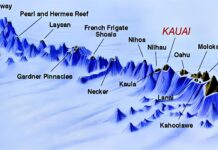Asperitas, also known as Undulatus asperatus, is a distinct cloud formation distinguished by wave-like features on the cloud’s underside. The Cloud Appreciation Society’s founder, Gavin Pretor-Pinney, introduced it as a new cloud type in 2009. Asperitas was included as a supplemental feature to the International Cloud Atlas in March 2017, making it the first cloud formation to be included since Cirrus intortus in 1951. This page presents an overview of Asperitas, including its definition, observations history, and features.

Asperitas is a type of cloud that appears as localized waves at the cloud’s base. It is distinguished by chaotic and less ordered wave-like formations that are smoother or dappled with smaller characteristics. From below, the cloud base might drop into sharp peaks that resemble a roughened sea surface. Asperitas is frequently associated with Stratocumulus and Altocumulus clouds, and altering amounts of light and cloud thickness can provide stunning visual effects.

Jane Wiggins of Cedar Rapids, Iowa, discovered Asperitas on June 20, 2006, and contributed her photograph to the Cloud Appreciation Society’s photographic collection. Many similar cloud formations have now been added to the collection. Gavin Pretor-Pinney collaborated with the Royal Meteorological Society in 2009 to promote Asperitas as a new form of cloud. Margaret LeMone, a cloud specialist at the American National Center for Atmospheric Research, had also photographed Asperitas clouds for 30 years, believing it to be a novel cloud variety. Asperitas clouds have been seen in a variety of areas across the world, including Canada, the United States, and New Zealand.

Despite the fact that Asperitas clouds seem black and stormy, they normally disperse without generating a storm. They have wave-like formations that are more chaotic and less ordered than Undulatus clouds. Asperitas clouds are abundant in the Plains states of the United States, especially in the morning and noon hours after convective thunderstorm activity.






